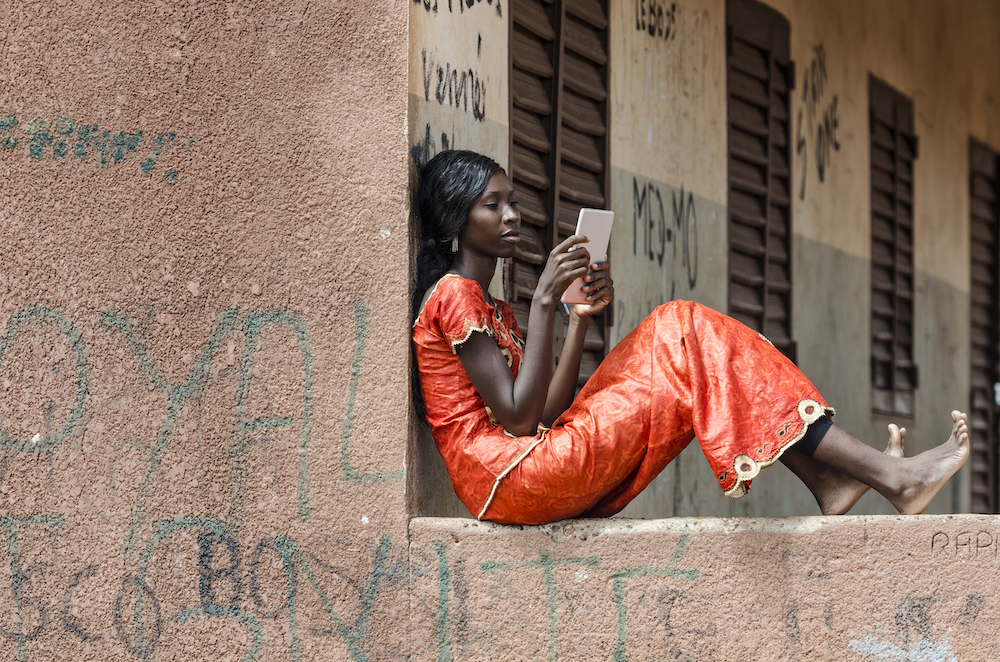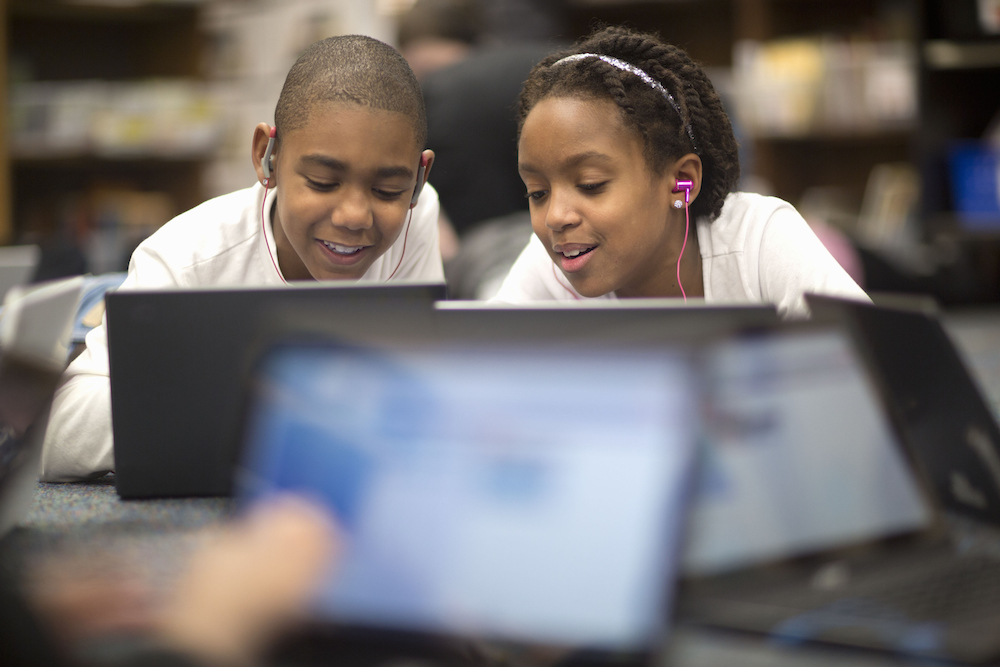Lesson 7: Reverse Image Search
Before you start the lesson, make sure to read through the lesson overview and the lesson preparation. The Facilitator Guide can also help you prepare.
Lesson Overview
Participants will learn how to verify news images by conducting a reverse image search. Participants will be able to determine the appropriate contexts in which they can rely on reverse image search results and recognize how re-contextualizing an image with its original news event can help combat misinformation. Participants will discuss the importance of verifying news images and why images can proliferate so widely during breaking news events.
Lesson Preparation
ESTIMATED TIME
ESSENTIAL QUESTION
- Why is reverse image search a useful tool in verifying information?
PREPARATION
- Students will need internet access for this lesson.
- There are opportunities to localize content to your students’ experience and local context. These opportunities are flagged as a “Teacher’s Note.” We suggest you read through the lesson ahead of time and prepare the examples before the lesson begins.
OPTIONAL: ISTE DIGCITCOMMIT COMPETENCY
- INFORMED: I evaluate the accuracy, perspective, and validity of digital media and social posts.
TELL YOUR STUDENTS
Sometimes photographs and videos that you find online may not be truthful because they are digitally altered. However, content that has not been digitally altered could also be misleading if it has been taken out of context (e.g., captured at a different time and/or location than the news event in question). As a result, verifying the source of an image you see on social media involves determining whether it is both accurate and in-context.
A useful tool for verifying the origin and potentially source, date, and location of a photograph is called a Reverse Image Search Engine.
ASK YOUR STUDENTS
- How do you think a reverse image search engine works?
TELL YOUR STUDENTS
A reverse image search engine allows users to search for information online using images instead of keywords.
A search engine first begins by gathering billions of images online into a database. By looking at information such as image file names and metadata, the database can organize images into a massive index, similar to the index in the back of a nonfiction book. When you upload an image file or enter the URL of an image, the search engine sorts through the items in the index to give you the results that are most relevant to your search. The search engine compares your image to the billions of others in its database, so you can discover if there are identical or similar photographs on the web, and where and when the image has been published.
Journalists oftentimes use a reverse search engine like Google Reverse Image Search [https://images.google.com/] or TinEye [https://www.tineye.com/] as the very first step of their verification process. Verifying the origin with a reverse image search engine may reveal that the image you are looking at was actually uploaded before a news event took place, or that the image was already associated with a different context. Different search engines may provide different results, but an effective image search can probably locate an image’s original source. Not all false or out-of-context images can be caught by a reverse image search engine, but such engines are still a powerful verification tool.
Teacher's Note Show Common Sense Education’s “How to Use Google Reverse Image Search to Fact Check Images” video to provide a demo for Google Reverse Image Search. Let participants know that they can also upload screenshots of images into reverse search engines. They can also filter their search results by clicking on Tools (below the search bar on the right), clicking on Time, and selecting a set duration or a custom date range.
For reference images, please see below:
pbs.org/newshour/extra/daily-videos/why-is-it-important-for-news-sources-to-be-trustworthy
IMAGE CLASS INTERACTION
Now, you’ll have a chance to see how a reverse image search engine works using an image you create. Use your computer or your mobile device to take a photograph. Please be mindful of privacy concerns: we recommend taking a photo of an inanimate object or scene that does not reveal personal details about you or about another person.
Upload this image into Google Reverse Image Search or TinEye and review the results.
ASK YOUR STUDENTS
- What results did you get?
- Were the results what you expected?
- Why or why not?
Assignment
Part 1
TELL YOUR STUDENTS
Professional journalists face unique verification challenges when dealing with breaking news situations such as accidents, natural disasters, and ongoing events that capture large amounts of media attention. Images and videos related to these news events spread quickly, and it can be difficult to locate and communicate with sources, especially those that remain in the affected zone. The pressure to quickly report on unfolding events, in addition to the prevalence of photo editing tools, can lead news consumers, and even professional journalists, to post or share inaccurate content.
Part 2
TELL YOUR STUDENTS
Use the TinEye reverse search engine tineye.com to identify the source of the photograph at the link in the slide. Investigate if there are similar images to the South African shark image and check if they correspond to the period of time when the original image was captured.
After you have verified the origin of the photograph, write a paragraph explaining why it is important to verify photographs that are shared online.
Participants can take a screenshot of the South African shark image and upload it to TinEye. Filtering the search results by the oldest date might reveal that it was posted on several publications. Unfortunately, social media websites remove the metadata of the original photos, so we cannot run this image through an EXIF data viewer to check if it is the original. A journalist may decide to contact people who post images to social media to confirm whether this photo is in fact the original.
Teacher's Note
This example is intended to make students think critically about the images they see and learn how to verify whether they are real or not. While the South African shark image is a great example to use, we encourage you to choose an image that will resonate with your students. If there is a local example that your students will connect with more, we recommend using that example instead.
Discussion
Part 1
TELL YOUR STUDENTS
Ask participants to turn to the person sitting next to them to discuss these questions in pairs.
ASK YOUR STUDENTS
- What methods did you use to find the original photograph posted by the source?
- How close did you get? How confident are you that the image you found is the original?
- Who is the source?
Part 2
Teacher's Note
Reconvene as a large group and ask participants to nominate partners who used effective or unusual techniques to find the origin and source. Discuss as a larger group.
ASK YOUR STUDENTS
- When using a reverse image search engine, how do you know if the oldest result in the search engine is the original photograph?
TELL YOUR STUDENTS
You cannot assume that the oldest result in a reverse image search engine is the original news image. Results may vary by search engine, and older results and/or the original image itself may not have been included in the search results. The best way to verify the origin of an image is to use reverse image search techniques in combination with other verification methods. For example, you might refer to other publications where the image is published to help you find and contact the original source. Finding multiple ways to verify a news image and its origin and source can help you ensure that you are conducting the verification process more thoroughly.
Reverse video search engines currently do not exist. How could you use a reverse image search engine to help you verify video content? For now, you can take a prominent screengrab in the video and run the still image through a reverse image search engine to see if previous versions exist. This method, unfortunately, is highly dependent on the screengrab that you choose. A video is essentially a combination of images that are shown in rapid succession (e.g., at 24 frames per second). As a result, video files contain a lot of data, which reverse image search engines are currently not built to fully support.
ASK YOUR STUDENTS
- Why do you think dramatic images such as these are shared so widely during breaking news events?
- Have you shared these kinds of images or videos before? Why/why not?
- Why do you think it is important to verify images and videos that are shared on social media during breaking news events?
Teacher's Note
Discuss as a large group.
RESOURCES
- Reverse Image Search Engines:
Congrats!
You've finished the lesson
Source:
This content is hosted by Meta and currently includes learning resources drawn from Youth and Media at the Berkman Klein Center for Internet & Society at Harvard University under a Creative Commons Attribution-ShareAlike 4.0 International license. You can make use of them, including copying and preparing derivative works, whether commercial or non-commercial, so long as you attribute Youth and Media as the original source and follow the other terms of the license, sharing any further works under the same terms.



 Previous Lesson
Previous Lesson 




